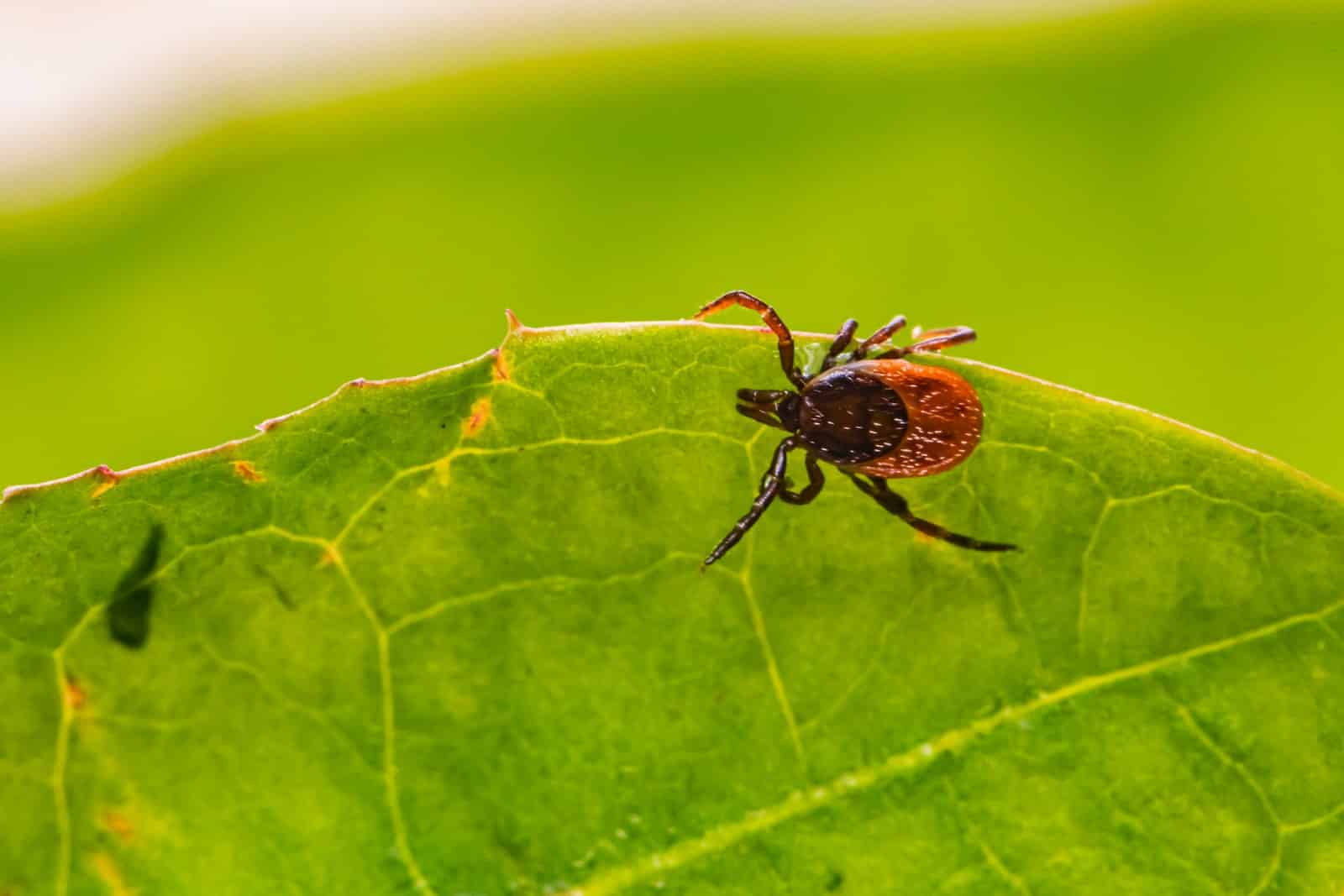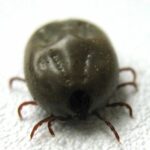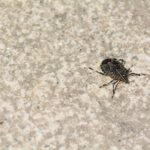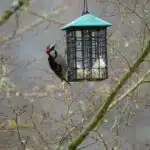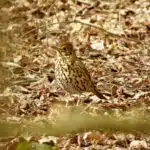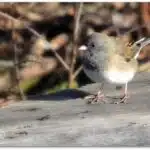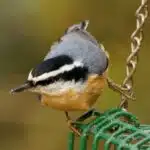Do you find yourself constantly worrying about ticks and the diseases they can carry? If so, you are not alone. Ticks have become a major concern for people across the country, especially those who spend time outdoors. Fortunately, there are effective ways to keep these pesky parasites away from your yard. In this article, we will discuss five effective ways to keep ticks out of your yard and help you enjoy the outdoors without fear of infestation.
The first step in keeping ticks out of your yard is to create a tick-resistant barrier around your property. This can be done by using certain types of mulch or vegetation that helps repel the pests. Additionally, it is important to regularly cut back grass and brush near your home as these areas provide perfect hiding spots for ticks. Finally, keeping moisture levels low around your house is also key in preventing ticks from entering your yard.
Finally, regular inspections and treatments should be conducted to ensure that no ticks make their way onto your property. When inspecting for an infestation, it is important to check both inside and outside of the house for any signs of the parasites. Additionally, it is recommended to use safe insecticides or other treatments that are designed specifically for tick control to keep them away from homes and yards.
By following these five steps, you can significantly reduce the risk of having a tick infestation in your yard and enjoy spending time outside without worry or stress. So read on as we discuss each of these methods in more detail!
1. Mow The Lawn Frequently
Mowing the lawn frequently is one of the most effective ways to keep ticks out of your yard. By regularly trimming long grass and removing dead leaves and other debris, you are creating an environment that is not conducive to tick growth. Not only does this make it difficult for ticks to hide and reproduce, but it also deprives them of their food source – the small animals that live in tall grass and leaf litter.
It’s important to mow on a regular basis, even during the winter months when ticks are less likely to be active. This will help ensure that your yard remains free from ticks throughout the year. Additionally, try to mow at least every two weeks during tick season – usually late spring through early fall – as this will further reduce the chance of an infestation.
Taking these measures can go a long way towards preventing a tick problem in your yard. But if you want complete protection, you’ll need to create a tick-proof barrier around your property too.
2. Create A Tick-Proof Barrier
Symbolically, the yard is a place of refuge – a safe haven from the bustling outside world. To ensure that it remains free of ticks, creating a tick-proof barrier is essential.
First, consider installing an organic tick control barrier around your yard’s perimeter to keep them out. This can be as simple as a three-foot wide strip of wood chips or gravel between your lawn and any nearby woods or shrubbery. You may also want to use a spray-on chemical repellent to create an invisible barrier that will make it difficult for ticks to enter your yard.
Second, if you have pets or kids who play in the yard, take extra precautions by keeping them away from areas where ticks like to hide – such as tall grasses and thick brush. You should also check their clothing and fur for ticks after they come back inside and give them regular flea/tick baths with pet shampoo.
Finally, removing leaf litter and other clutter around your property is another way to discourage ticks from making themselves at home in your yard. Taking these steps will help ensure that your outdoor space remains a peaceful oasis free of unwelcome visitors like ticks.
3. Remove Leaf Litter And Clutter
In a world where ticks are increasingly becoming a problem, it’s important to take the necessary steps to keep your yard safe. Therefore, one of the most effective ways to get rid of ticks in your yard is to remove leaf litter and clutter. Let’s explore this further.
To start with, leaf litter is a breeding ground for mice, which in turn can be a source of food for ticks. This means that if you have leaf litter in your yard, it will attract mice, which will then attract ticks. By removing all sources of leaf litter from your property – either by raking or bagging it up – you can help minimize the chances of having ticks in your yard. Additionally, any other clutter such as wood piles or garden furniture should also be removed from the area as these can provide shelter for rodents and insects which are an ideal food source for ticks.
Furthermore, by removing these items you create a much cleaner environment for yourself and those around you. This not only helps reduce tick populations but also makes your yard look much more appealing and inviting to spend time in. Not to mention that it helps lower the risk of other pests such as mosquitoes and fleas entering your property too!
So by taking the simple step of removing leaf litter and clutter from your yard, you can go a long way towards protecting yourself and those around you from tick-borne illnesses while also creating an attractive outdoor space to enjoy with family and friends. Next up: making your yard less attractive to deer – something we’ll examine next!
4. Make Your Yard Less Attractive To Deer
One way to keep ticks out of your yard is to make it less attractive to deer. Deer often carry and spread ticks, so by eliminating sources of food and shelter that attract them you can reduce the presence of ticks in your yard. This includes removing any bird feeders or pet food dishes, cutting back overgrown vegetation, and keeping all potential hiding places such as woodpiles away from the perimeter of your property.
Another strategy for reducing the population of ticks in your yard is to regularly mow your grass. Keeping it short will discourage deer from grazing on it and also reduces tick-friendly areas like tall grasses and weeds where they can hide. Additionally, you can use a combination of insecticides and repellents on foliage around the edges of your property to further deter deer activity.
These two steps are important for making your yard less inviting for deer, which in turn will help keep ticks out.
5. Plant Tick-Repelling Plants
Recent studies show that ticks are the most common vector for the transmission of disease. Unfortunately, it’s not just outdoor adventurers who are at risk of tick-borne illnesses; homeowners can also experience a similar threat from pests in their own yards. To keep your family safe, one effective approach is to plant tick-repelling plants around your yard.
Using nature to fight nature can seem like an oxymoron, but certain plants have been proven to repel ticks in a natural and cost-effective way. Lavender and marigolds are two of the most effective species for this purpose, as they release fragrances and oils that both mask human scents and fend off arthropods like ticks. Planting these flowers in patches around your yard will create a barrier that will make it difficult for them to find hosts.
Other options include using mulch or woodchips instead of grassy areas, which can also make it harder for ticks to find places to hide. Additionally, keeping away wild animals like deer or rodents that could bring ticks into your yard is another crucial step in eliminating these pesky critters from your property altogether.
6. Get Rid Of Unwanted Wildlife
Did you know that Lyme disease cases in the US have doubled between 2015 and 2018? It is a serious illness that can have long-term effects and can be caused by tick bites. So, what are the effective ways to keep ticks out of your yard? One way is to get rid of unwanted wildlife.
Getting rid of wildlife, such as squirrels, raccoons, and deer that attract ticks can be an effective way to reduce tick populations in your yard. You can use special fencing around your garden or yard to keep these animals out. Additionally, you may want to remove any bird feeders from your property since they serve as an attractive food source for animals that carry ticks.
If you’re unable to keep wildlife away from your yard, there are other methods you can use to reduce tick populations. These include regularly mowing the grass and removing dead leaves and brush around the house where ticks live and breed. This will help eliminate potential hiding spots for the pests. Also, make sure there’s a clear separation between your lawn and wooded areas so that tick-carrying creatures don’t invade your home turf!
Next up: applying pesticides carefully – another important step in keeping ticks out of your yard!
7. Apply Pesticides Carefully
Tackling the issue of ticks in your yard requires careful consideration. One way to do this is by applying pesticides carefully. Taking extra precautions when using pesticides can be a great way to keep your yard safe from ticks and other pests.
When using pesticides, it’s important to follow the directions on the product label closely. Make sure you wear appropriate clothing like long-sleeved shirts and pants, as well as protective eyewear and gloves. Also be mindful of where you’re spraying; avoid areas near bodies of water or gardens where beneficial insects may live.
Using tick tubes around your yard can also help reduce the number of ticks in your outdoor space. Tick tubes contain specially treated cotton that is placed around your property, which serves as a lure for mice that carry ticks. The mice take the treated cotton back to their nests, eliminating any existing ticks before they can spread elsewhere. Doing this periodically can reduce the number of ticks in your yard over time and help keep you and your family safe from tick-borne illnesses.
8. Use Tick Tubes
The eighth step to keep ticks out of your yard is to use tick tubes. These are cardboard cylinders that are filled with permethrin-treated cotton balls. The cotton balls attract small rodents like mice and chipmunks, which pick up the permethrin when they take the cotton balls back to their nests. This chemical then kills off ticks in the area, reducing their population in your yard.
Using tick tubes can be an effective way to reduce the number of ticks without having to apply insecticides directly on your lawn or garden bed. It also provides an additional layer of protection against other pests, such as fleas and mosquitoes, since these animals may also be attracted by the permethrin-treated cotton balls.
Overall, using tick tubes is a great way to keep ticks out of your yard without having to resort to applying pesticides directly onto your plants and grasses. Now that you have taken this step, it’s time to move onto applying insecticides to shrubs and trees for extra protection from ticks.
9. Apply Insecticides To Shrubs And Trees
It’s a bit like a chess game, where the pieces are living and breathing creatures. Our pawns are us, the players; our knight is the insecticide; and the king is the dreaded tick. We must strategically move our knight to protect ourselves from the king’s reign of terror. To do this, we must apply insecticides to shrubs and trees in our yard.
Insecticides can be applied with a liquid spray or dust granules that are spread around the perimeter of your yard, as well as around any shrubs and trees you have. The active ingredients in these products will repel ticks by killing them on contact with their potent chemicals. Be sure to read the label for specific instructions for use and follow them closely for best results. Additionally, replace any mulch or leaf litter around your yard that may serve as an ideal breeding ground for ticks.
Ticks can be pesky little critters, but with an effective plan of attack you can keep them out of your yard. Applying insecticides to shrubs and trees is just one piece of this complicated puzzle to ensure your outdoor space stays safe from these uninvited guests. By taking preventative measures such as using a tick repellent for pets, you can help keep your family safe from tick-borne illnesses all year round.
10. Use A Tick Repellent For Pets
Wow, getting rid of ticks from your yard can be a monumental task! But with the right strategies, you can make it possible. One such strategy is to use a tick repellent for pets. This is an absolute must if you want to keep your yard free of these vile creatures.
Using a tick repellent for pets is one of the most effective ways to make sure that your furry friends don’t become victims to ticks. It’s also important to note that it doesn’t just protect them from ticks but other insects as well. You should apply the repellent on their fur regularly and after they’ve been outdoors in order to ensure maximum protection from ticks.
Tackling tick infestations require constant vigilance and preventive measures, like using pet tick repellents. Taking these steps will not only help keep your pet safe but also ensure that your yard remains free of these pesky parasites! Now that you know how to use a tick repellent effectively, it’s time to move on to the next step—checking for ticks after outdoor activities.
11. Check For Ticks After Outdoor Activities
According to the CDC, tick-borne diseases are on the rise. With this in mind, it is essential for homeowners to take precautions to keep ticks out of their yards. One important step is to check for ticks after outdoor activities.
The first step is to inspect your body and clothes for any signs of ticks. This should be done once you come back inside, and again before you go to bed. Be sure to check your entire body from head to toe, including under arms, behind ears and in hair. Additionally, it is important to check your clothing for any ticks that may have clung onto them while outdoors.
Once you have finished checking yourself and your clothing, it is a good idea to take a shower or bath as soon as possible. This can help further reduce the risk of any ticks that may have been brought indoors on your body or clothes from attaching themselves onto you or other family members. Doing these simple tasks can go a long way in keeping your family safe from tick-borne illnesses. Transitioning into the next step, providing tick-proof habitats for beneficial insects can also help protect against ticks in your yard.
12. Provide Tick-Proof Habitats For Beneficial Insects
Creating an environment that is hostile to pests, while also providing a hospitable habitat for beneficial insects, is a delicate balancing act. Just as the ants in Aesop’s fable had to take the grain of wheat from one side of the river to the other, so too must we carefully weigh our options if we want to keep ticks at bay. Step twelve in this process is providing tick-proof habitats for beneficial insects.
To achieve this goal, it’s important to create areas within your yard that are suitable for helpful bugs like ladybugs and lacewings, which feed on pests such as ticks. For example, planting flowers that attract these bugs can provide them with nectar and other food sources they need in order to thrive. Additionally, avoiding insecticides and herbicides can help ensure that these beneficial insects don’t become collateral damage during your pest control efforts.
By creating tick-proof habitats for the good guys in your yard, you can help them outnumber and eventually drive out any unwanted guests – such as ticks – through natural means. And when it comes time to tackle potential tick breeding grounds like play areas or sandboxes around your home, you’ll be starting off on the right foot.
13. Place Sand Or Gravel Around Play Areas
Creating a safe backyard environment for family and friends is an important task, like building a castle wall around your kingdom. Adding sand or gravel to play areas is an effective way to keep ticks at bay. It’s like creating an invisible moat that ticks can’t cross.
Sand or gravel provides a unique barrier between ticks and people by disrupting the tick’s habitat and making it harder for them to move around. The small particles also create a less inviting environment for any insects passing through; so, even if they make it over the ‘moat’, they won’t find enough food or shelter to survive.
Plus, sand and gravel are relatively inexpensive materials that can be easily added to existing play areas. They provide a natural defense against ticks with minimal effort and upkeep required. All that’s needed is periodic maintenance such as raking or sweeping away plant debris and other organic matter which could attract more insects. With this simple step, you can ensure your outdoor area remains safe from ticks all year round.
With these steps in place, it’s time to take the next step towards keeping play areas free of ticks: keep play areas away from bushes and shrubs!
14. Keep Play Areas Away From Bushes And Shrubs
To effectively keep ticks out of your yard, it’s important to create a barrier between the play area and any nearby bushes or shrubs. For example, Sarah had a problem with ticks in her backyard when her daughter started playing near the bushes. After consulting with an expert, she moved the play area away from the shrubs and was able to reduce tick activity significantly.
When planning your play area, think about how close it is to any existing foliage. You don’t want children or pets playing in or near tall grasses and other vegetation that can attract ticks. Avoiding these areas altogether is best if possible. If not, consider adding a barrier like a fence around the perimeter of the play area for extra protection.
At the same time, you should also pay attention to where you’re placing sand or gravel. This can be used as a protective layer between the grass and play area, making it harder for ticks to enter the space. Be sure to spread it around evenly; this will prevent gaps that could let ticks through. With these steps and some regular maintenance, you’ll be well on your way to keeping your yard free from ticks!
15. Have Your Property Professionally Treated
Who would have thought that the solution to keeping ticks out of our yards would be to hire a professional? That’s right, it turns out having your property professionally treated is one of the most effective ways. Ironic, isn’t it?
Not only can these professionals rid our yard of ticks, but they can also provide advice on how to keep them away in the future. They’ll assess the size and type of your yard and suggest which products or treatments are best for your specific situation. Plus, they know exactly how and where to apply them for maximum effectiveness.
So, if you’re looking for an effective way to keep ticks out of your yard, hiring a professional could be just what you need. Don’t let their services become another item on your never-ending to-do list–it’s worth taking this step seriously!
Frequently Asked Questions
How Often Should I Mow The Lawn To Keep Ticks Away?
Keeping ticks out of your yard requires consistent effort, and mowing the lawn is an effective way to start. It’s a modern-day conundrum: how often should you mow the lawn to keep ticks away? Let’s take a look at the facts.
Once a week is generally recommended for regular lawn maintenance and tick control. This helps reduce tick habitat, as ticks prefer tall grasses and brushy areas that are not regularly trimmed. Mowing also helps disrupt their life cycle as adult female ticks can be found in tall grass prior to laying eggs. Additionally, it removes debris like leaves where ticks may hide during the day.
It is important to use caution when mowing, however, as many species of ticks are most active in cooler temperatures such as spring and fall. If you’re mowing during this time, wear long-sleeved shirts and long pants tucked into boots or socks to avoid contact with any adult ticks that might be present on the grass. Also make sure to inspect your body thoroughly after leaving the area just in case you’ve been bitten by a tick!
So there you have it: keeping your yard free from ticks requires regular lawn maintenance and special precautions while mowing during peak season periods. With the right methods, you can create an environment that’s less inviting for these pesky critters!
What Type Of Barrier Should I Create To Keep Ticks Out?
Creating a barrier to keep ticks out of your yard is crucial for keeping your family safe. It’s like putting up a shield of protection against these unwelcome visitors. But what kind of barrier should you use?
The first thing to consider is the type of terrain in your yard. If you have a flat lawn, you can use physical barriers like fencing or even rocks to create an impenetrable wall that ticks can’t cross. If the area is hilly, try using landscaping plants like ground cover or shrubs as natural tick repellents. Additionally, make sure to regularly mow and trim any tall grasses or weeds that may be serving as tick havens.
Finally, if you have pets, be sure to keep them on flea and tick preventative medication year-round to help reduce the number of ticks in your yard. No matter what type of barrier you choose, it’s important to remember that taking preventive measures against ticks is essential for keeping your family safe from potential illnesses they carry.
How Do I Remove Leaf Litter And Clutter To Get Rid Of Ticks?
According to the Centers for Disease Control and Prevention, tick-borne diseases are on the rise, with more than 640,000 reported cases in 2018 alone. Removing leaf litter and clutter from your yard is one of the most effective ways to prevent ticks from moving in. Here’s how you can get rid of these pesky critters.
First, take a look around your yard to determine where there may be too much clutter. Dead leaves are often breeding grounds for ticks, so it’s important to remove them as soon as possible. You can rake them up or use a blower to get rid of any large piles. Be sure to dispose of all of the leaves away from your house and garden area. Additionally, clean up any other debris such as sticks or wood chips from around your yard and store them away from high traffic areas like sidewalks or patios.
Next, create barriers that will keep ticks away from your yard. You can do this by keeping grass trimmed, planting insect-repelling plants such as mint or lavender near entryways and windows, and using a perimeter spray containing an insect growth regulator (IGR). This type of product prevents ticks from reproducing in your yard and keeps populations down over time. Finally, be sure to check yourself and your pets for ticks after spending time outdoors — especially if they’ve been near tall grassy areas — since they may have picked up some hitchhikers along the way!
By taking these steps, you can significantly reduce the number of ticks in your yard and help protect yourself and your family against tick-borne illnesses.
What Plants Can I Plant To Repel Ticks?
The garden can be a symbol of life, growth, and protection – but it can also be a home to unwanted guests like ticks. Ticks are small, parasitic creatures that feed on the blood of warm-blooded animals and humans. They can spread diseases like Lyme disease, so getting rid of them is important for our safety. Planting certain plants in your yard can help repel ticks and keep them away from your family.
One type of plant that is effective in repelling ticks is the marigold. Marigolds have a strong scent which many bugs find unpleasant and will stay away from. In addition to this, marigolds are easy to grow and maintain, making them an excellent choice for gardens. Other plants such as mint, chrysanthemums, lavender, rosemary, catnip, garlic and lemongrass also have tick repelling properties as well. All these plants should be planted close together around your yard to form a perimeter that helps keep ticks out.
When planting these tick-repelling plants in your garden it’s important to remember to clean up any leaf litter or other debris near your garden area as this can attract ticks. A clean garden free of clutter helps keep out unwanted pests while keeping you safe from potential diseases they may carry. So get creative with your garden designs and create an oasis that you can enjoy without worrying about pesky ticks!
What Type Of Insecticides Should I Use To Protect My Shrubs And Trees From Ticks?
According to a study by the Centers for Disease Control, ticks are responsible for the transmission of over half of all vector-borne diseases in the United States. Protecting your yard from ticks is essential for keeping your family safe and healthy. An effective way to get rid of ticks is to use insecticides on shrubs and trees.
Insecticides are chemical treatments that can be used to kill pests that cause damage or disease. There are several different types of insecticides available, including liquid sprays, granules, dusts, and baits. Liquid sprays are most effective when applied directly onto plants and shrubs, while granules can be spread around the base of trees and shrubs to create a barrier against ticks. Dusts should be applied in areas where tick activity is highest, such as around bird feeders or compost piles. Baits can also be used to control tick populations in your yard by providing a food source that will attract them before they get into your home.
It’s important to remember that using insecticides requires careful application and monitoring, as they can also have adverse effects on other beneficial insects like bees. Before using any type of insecticide, it’s best to consult with an expert who understands their proper use and safety precautions. With proper application and maintenance, insecticides can be an effective way to protect your home from ticks while keeping your family safe from potentially dangerous diseases.
Conclusion
In conclusion, it is important to take preventative measures to keep ticks out of your yard. Mowing the lawn regularly, creating a barrier around your property, removing leaf litter and clutter, planting certain plants as repellents, and using insecticides on shrubs and trees can all be effective ways to protect against ticks. Additionally, controlling the deer population in your area will help reduce tick populations. If you do find any ticks on your property, there are natural remedies such as garlic oil or cedar oil that can be used to repel them. Ultimately, by taking these steps and remaining vigilant about checking for ticks in your yard and on yourself regularly, you can enjoy a safe outdoor space without worrying about these pesky creatures.

